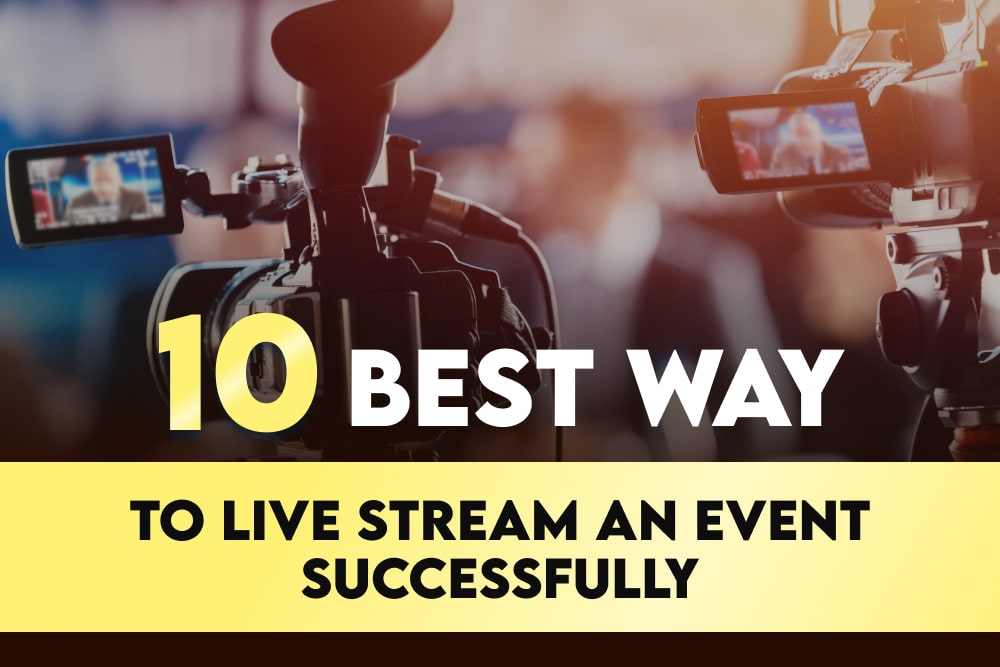

Head of HR at Rent For Event

Head of HR at Rent For Event
Get ready to rock the virtual stage! In this article, we’ll explore the 10 best ways to live stream an event successfully. Discover the best platforms, equipment needed, and tips for engaging your audience. From testing your stream to using lights and LED screens, we’ve got you covered. Let’s make your live streams shine like a superstar!

When it comes to live streaming an event, choosing the right platform is key to reaching a wide audience and making your stream a smashing success! But with so many options out there, which one should you pick? Don’t worry, we’ve got you covered with these helpful tips!
To have a great live stream event, you need the right equipment for clear video and sound. It doesn’t matter if it’s a concert or a conference; having the essential gear is very important. So, what do you need for live streaming? Here’s what you need:
To have a proper live broadcast setup, you need to plan everything carefully. From getting the stage ready to hiring the right helpers, each part is important for a successful live stream. Here are the main steps in setting up a live stream:
To have a great live stream, you need both good pictures and clear sound. Sound is important to keep people interested and make the stream smooth. Here are some tips to make your live stream sound good:
One of the keys to a successful live stream is keeping your audience actively involved and engaged throughout the event. Engaged viewers are more likely to stay tuned, interact, and share your live stream with others. Here are some valuable tips to ensure maximum audience engagement during your live stream:
A smooth live stream is essential for providing a seamless and enjoyable experience to your online audience. Technical issues and interruptions can quickly turn off viewers and impact the success of your event. To ensure everything runs smoothly, careful planning and preparation are necessary. Here are some crucial steps to guarantee a glitch-free live stream:
To make your live stream look cool, you need nice pictures and visuals. They keep the audience interested and make the event more exciting. Whether it’s a concert or a conference, here are some tips to make your live stream visually awesome:
To get more people to watch your live stream, you need to promote it well. It means letting your target audience know about the event and making them excited to join. Here are some tips to promote your live stream:
Engaging with your viewers doesn’t end when the live stream is over. The post-live stream interaction is just as important to maintain a connection with your audience and gather valuable feedback. Here are some valuable tips for effectively interacting with viewers after the live stream:
Checking how well your live stream did is important. It helps you know if it worked well and what to do better next time. You do this by looking at some important numbers and information. By doing this, you can make your live streams even better and give your audience what they like. Here are some tips to analyze your live stream performance:
Mastering the art of live streaming involves leveraging the right platform, equipment, and visuals to create captivating events. Engage your audience during and after the live stream, appreciating their participation and feedback. Utilize data analytics to refine your strategies and deliver content that resonates.
Don’t forget, if you need equipment, consider Rent For Event, an AV company offering light equipment rental, sound equipment rental, stage rental, and more.
Embrace innovation and stay attuned to your audience’s preferences, forging lasting connections and shaping the future of virtual engagement. Happy streaming!